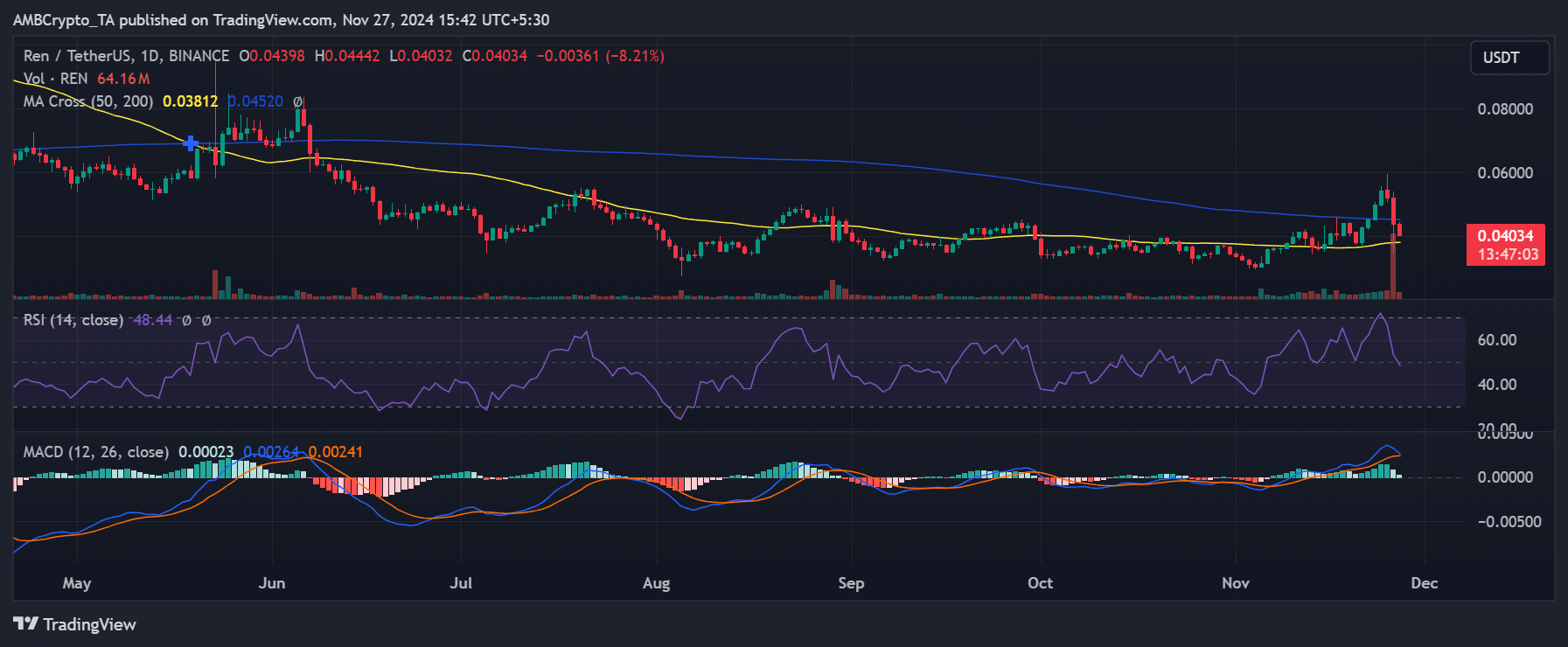-
Binance’s recent decision to delist five trading pairs has raised concerns among investors and highlighted the fragility of smaller cryptocurrencies.
-
This move, while affecting tokens with a combined market cap of under $100 million, signals a broader trend impacting the cryptocurrency ecosystem.
-
“The market has reacted sharply to the news, illustrating how quickly sentiments can turn against smaller assets,” commented an analyst from COINOTAG.
Binance’s delisting of five trading pairs prompts market volatility, impacting smaller cryptocurrencies and raising concerns over their long-term viability.
Understanding the Price Impact of Recent Delistings
The announcement of the delisting has led to profound price movements for the affected tokens. GFT/USDT saw over a 30% drop within just 24 hours, with its relative strength index (RSI) at a low 28.71, indicating significant overselling. An analysis of the moving average convergence divergence (MACD) suggested a strong downward pressure, reflecting the pessimistic outlook among traders.

Source: TradingView
IRIS/USDT followed with a decline of 25%, falling below its 50-day moving average. The RSI for IRIS mirrored the oversold sentiment at 28.74, while the MACD indicated continued bearish divergence, further dampening recovery hopes.
KEY/USDT suffered the steepest drop, losing nearly 40%. The RSI plunged to 34.03, with MACD signaling a strong bearish trend, instilling caution among traders.
Similarly, OAX/USDT faced a significant decline, dropping approximately 45%, with its RSI at a low 26.76, revealing extreme selling pressure. REN/USDT also saw a 20% loss, with RSI nearing 48.44, indicating it is nearing oversold conditions.

Source: TradingView
Assessing the Broader Market Implications
The rationale behind Binance’s delisting decisions can often include low trading volumes, failure to meet technical requirements, or regulatory concerns. Such actions not only destabilize the tokens involved but also highlight the inherent vulnerabilities smaller cryptocurrencies face when dependent on central exchanges.
Historically, even larger altcoins such as Ripple [XRP] and Cardano [ADA] have encountered delisting or trading limitations due to regulatory scrutiny, underscoring the fact that no asset is completely shielded from exchange oversight.
Future Outlook for Affected Cryptocurrencies
The near-term outlook for the delisted assets appears bleak. The removal from Binance’s platform will likely lead to a significant reduction in liquidity and exposure, complicating any potential recovery.
Traders may turn to decentralized exchanges to facilitate transactions for these tokens, but the challenges posed by lower visibility and limited liquidity often hinder price stabilizations and widespread adoption.
Conclusion
The delisting of trading pairs by Binance serves as a stark reminder of the susceptibility of smaller cryptocurrencies to the decisions made by major exchanges. As the market grapples with these changes, stakeholders must consider the implications for liquidity, trading behavior, and overall market health. Continued monitoring and prudent engagement will be crucial for investors navigating this challenging landscape.
